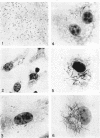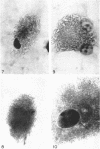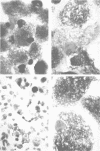Abstract
Successful growth of Mycobacterium lepraemurium was observed in cultures of mouse peritoneal macrophages. The optimal host cell maintenance medium was composed of 40% horse serum, 50% of the chemically defined medium NCTC 109, and 10% of a 1:5 dilution of beef embryo extract, supplemented with both liver extract and ferric nitrate. Multiplication of the bacilli was observed in 1 week and maximal growth in 6 to 7 weeks. All macrophages were filled with tens to hundreds of the organisms in cultures showing maximal growth. Glycerol caused an increase in the normal length of M. lepraemurium, without a corresponding increase in the number of the bacilli. Elongation of M. lepraemurium was observed 3 or 4 days after infection. Rapid and uniform growth of M. lepraemurium was achieved in serially transferred cultures (subcultures). The cumulative increase of the number of intracellular bacilli was 1.4 × 1020-fold in 14 transfers over a period of 68 weeks in one series, and 1017-fold in 12 transfers over a period of 56 weeks in another series. The generation time of M. lepraemurium was 7 days, a growth rate which approximates the fastest growth of the organisms in vivo. Organisms harvested from cultures at various stages of growth produced murine leprosy in mice, but showed no growth in bacteriological media. The present model offers an opportunity for studies on the host-parasite relationship without the complication of extracellular growth of the parasites.
Full text
PDF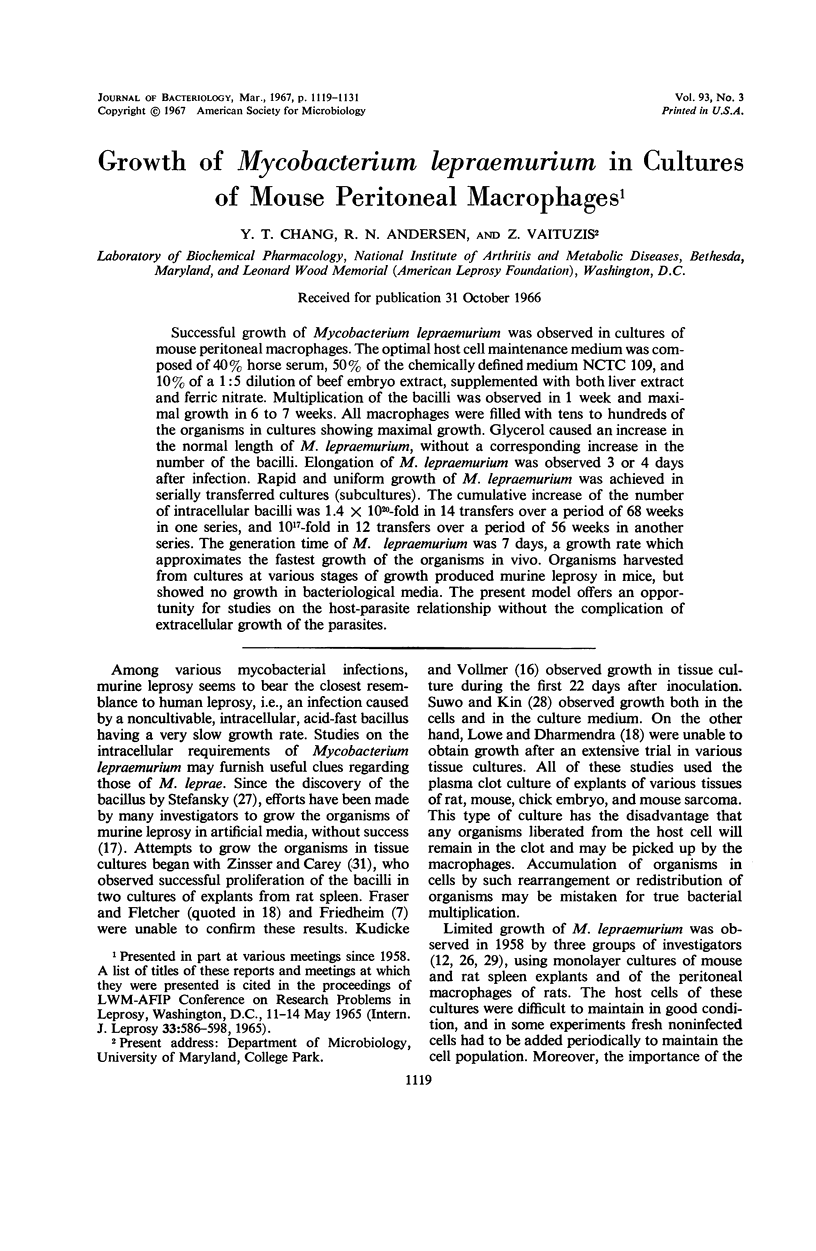
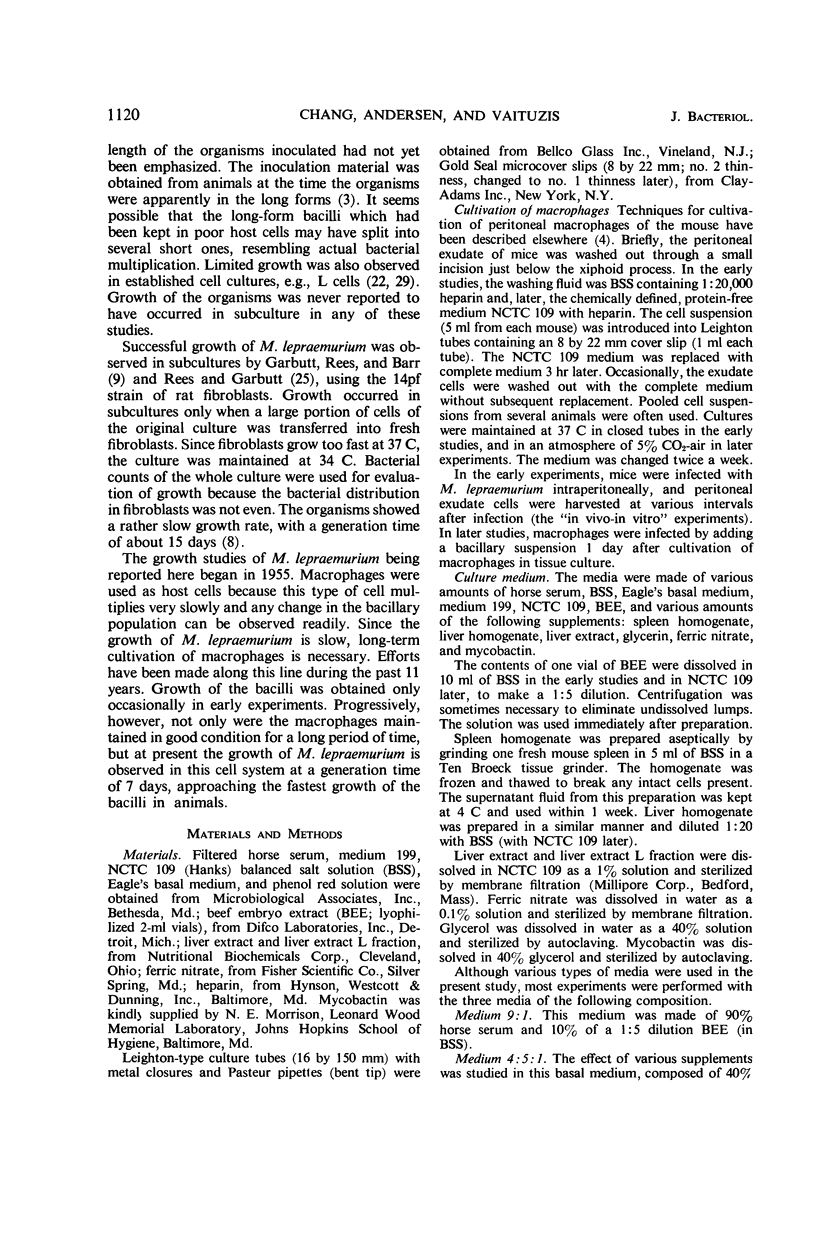
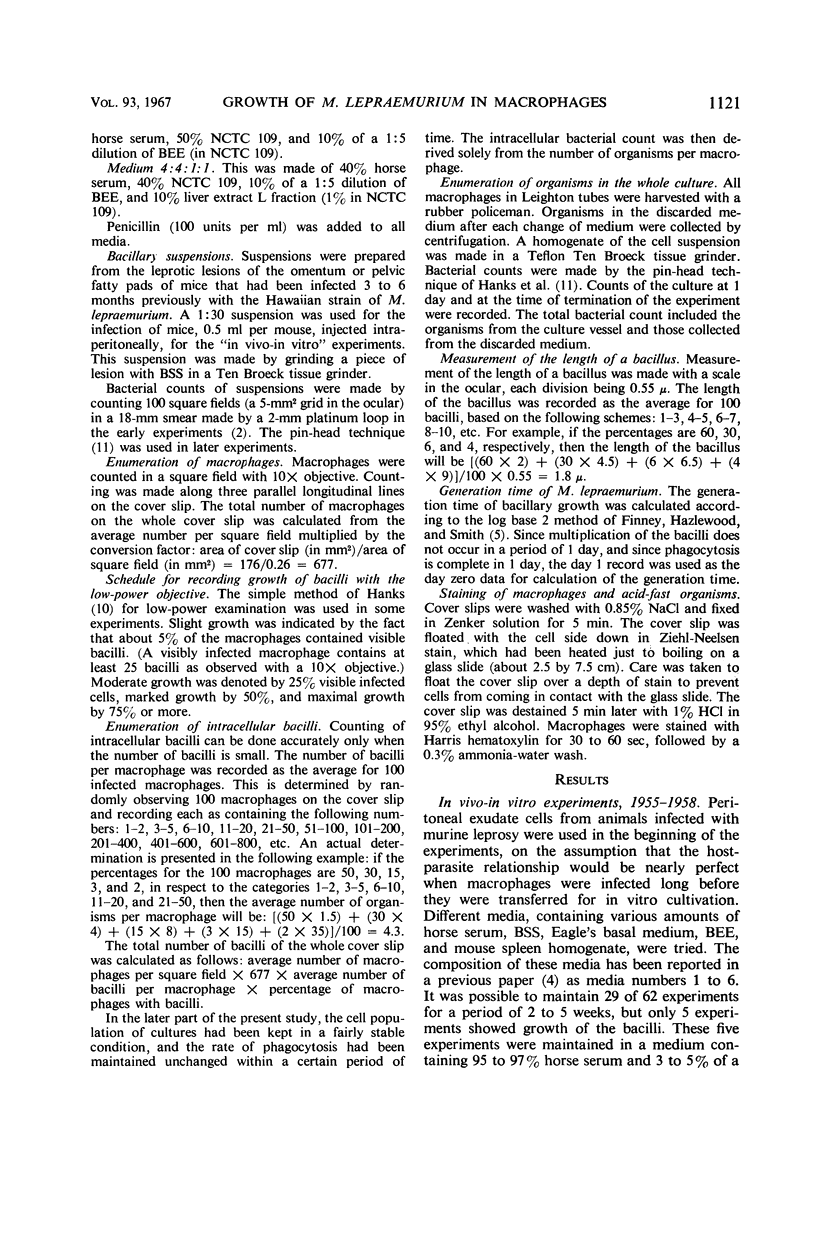
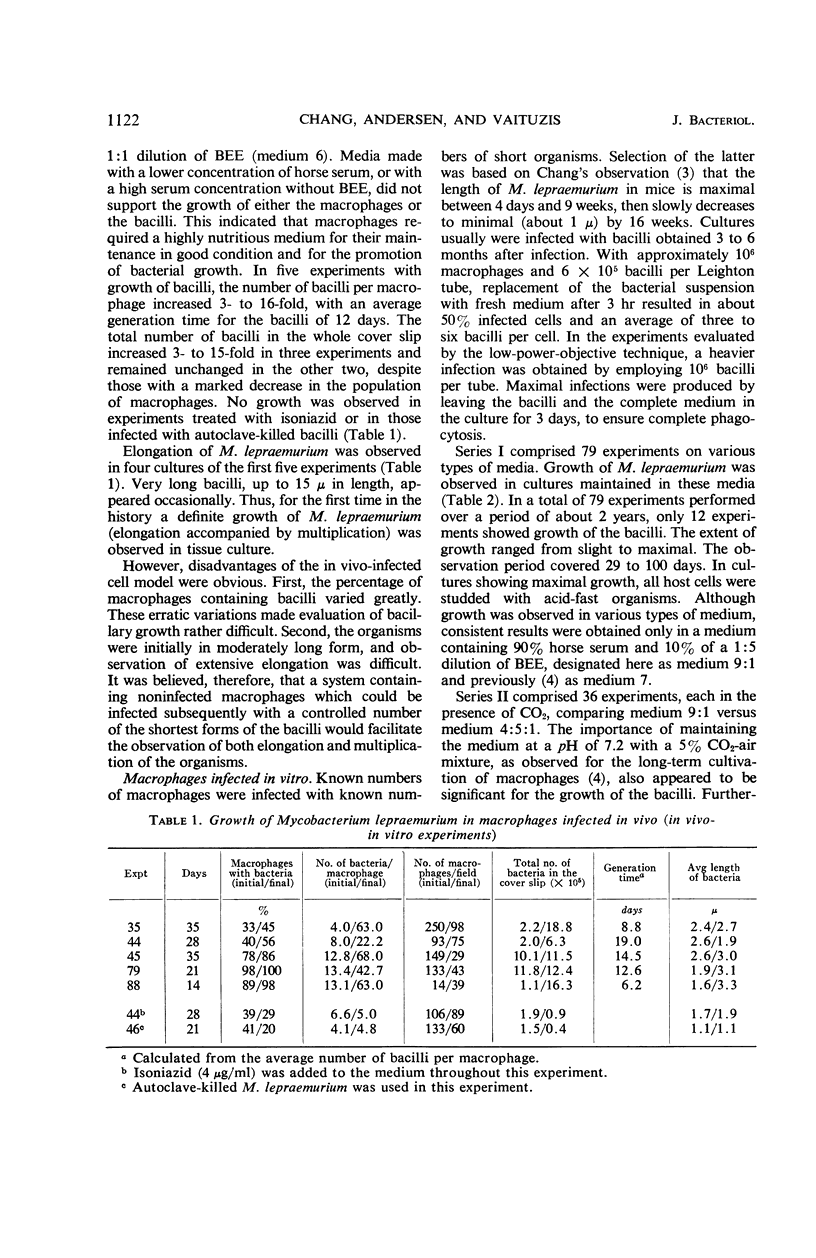
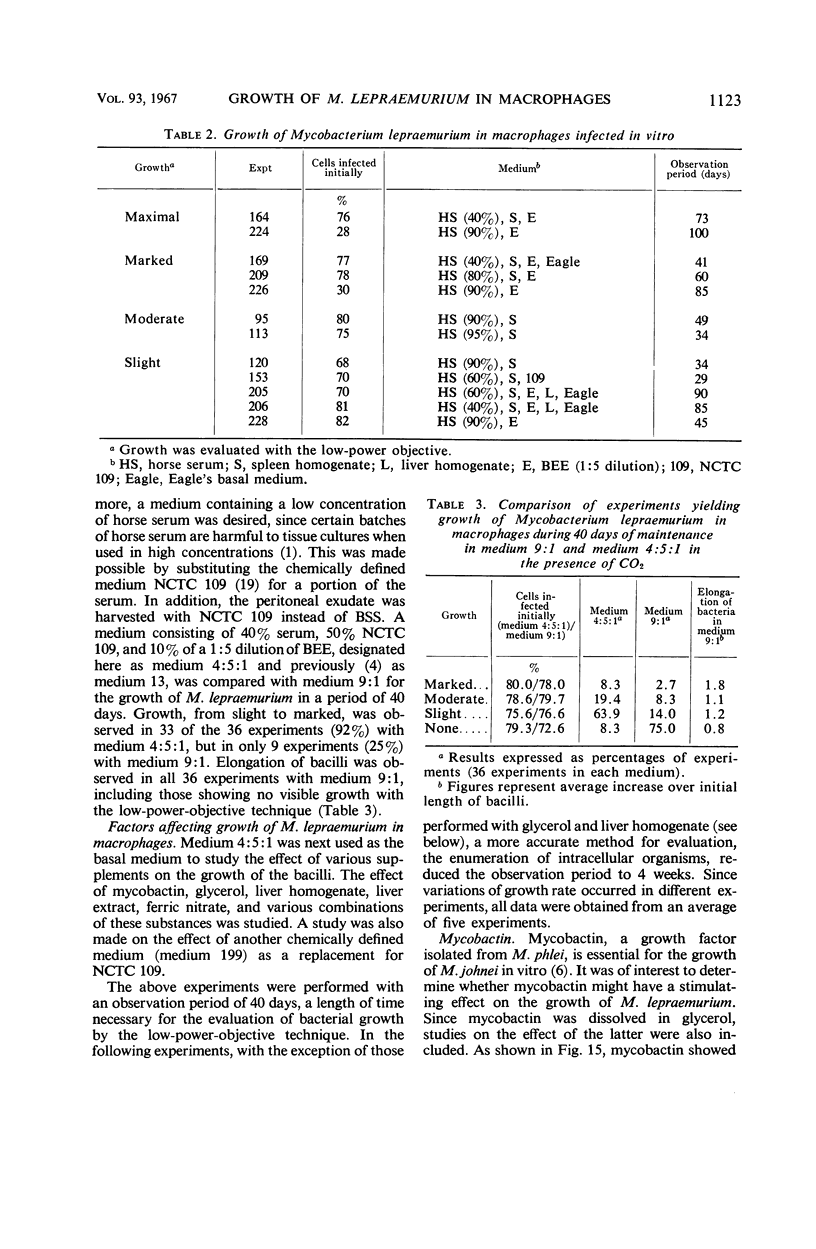
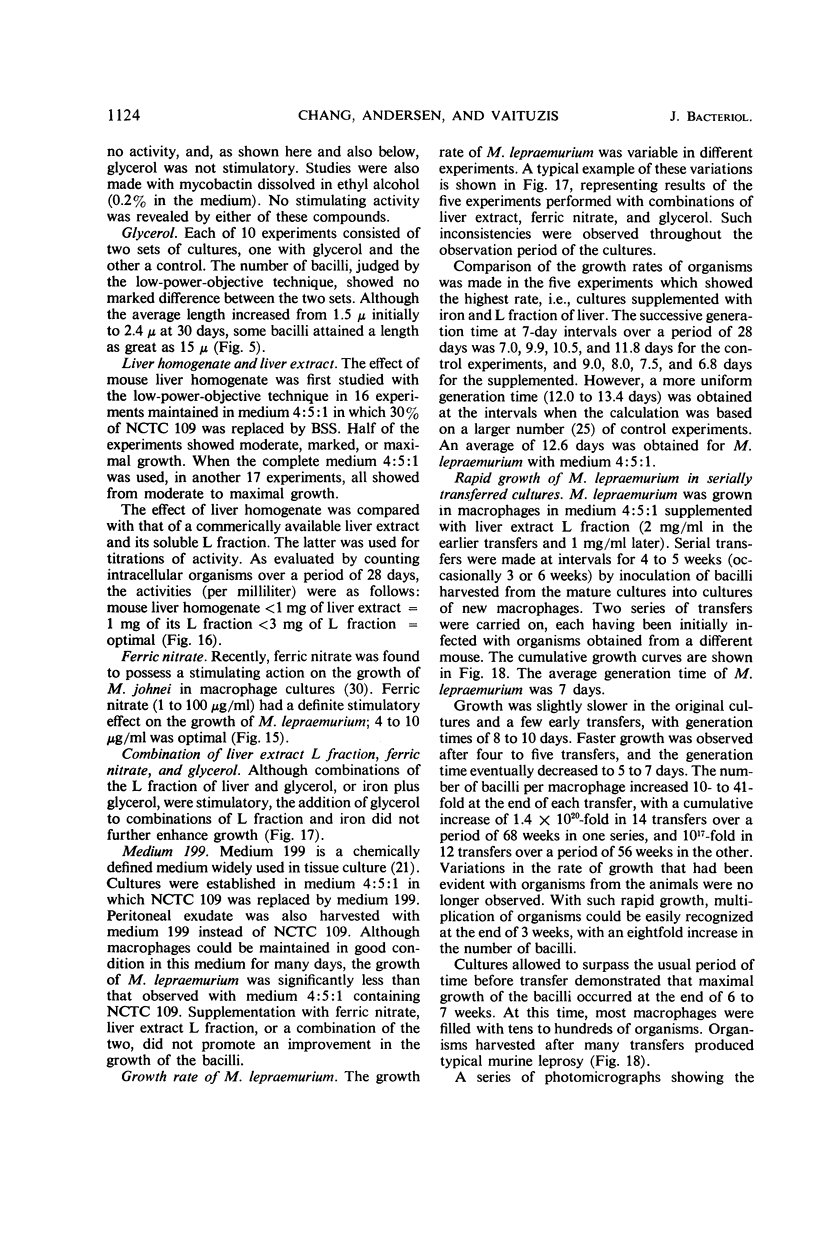
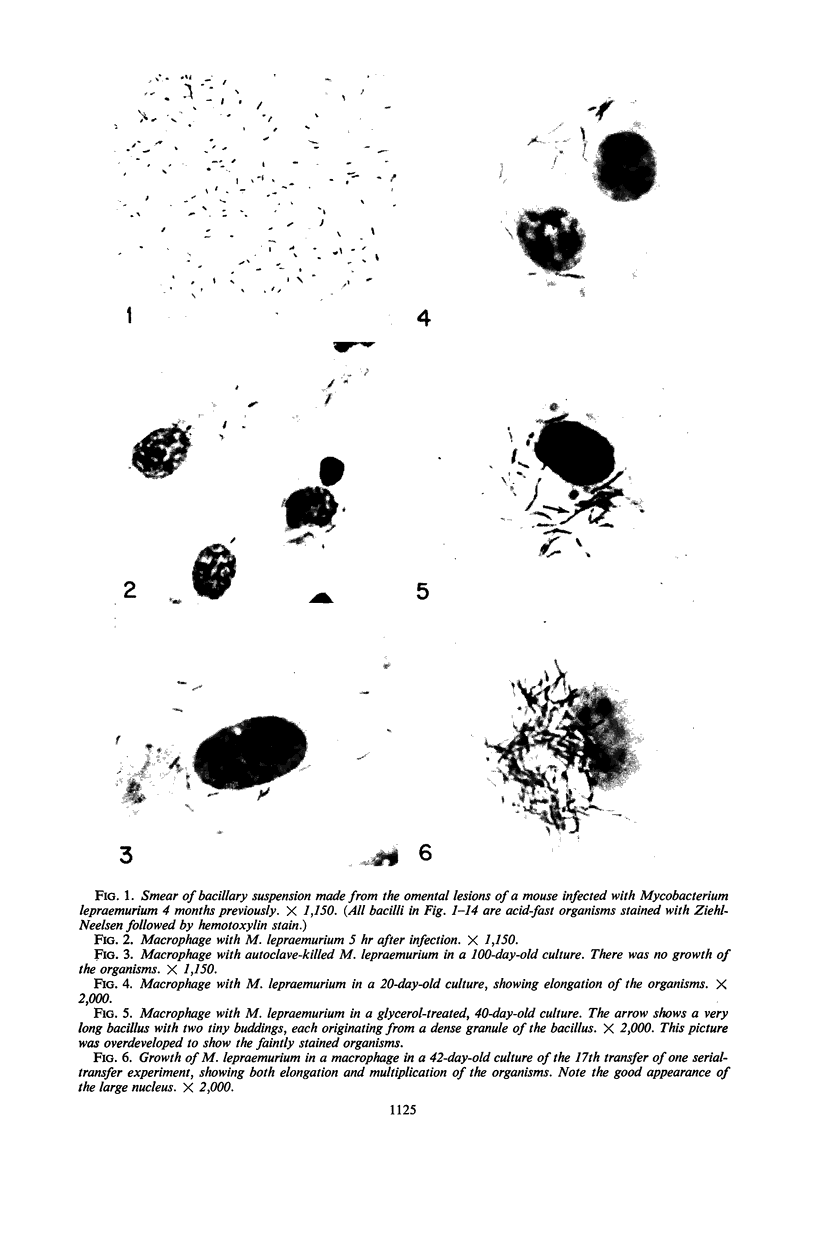
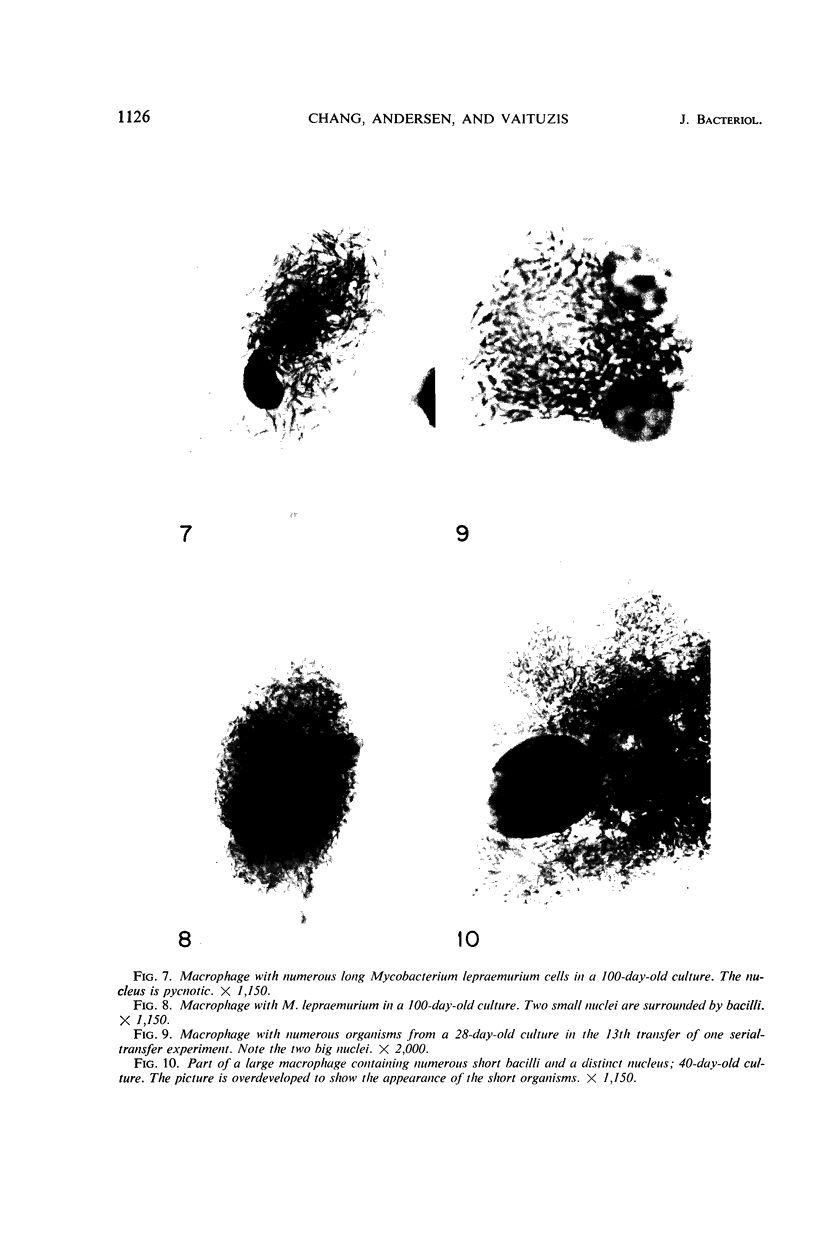
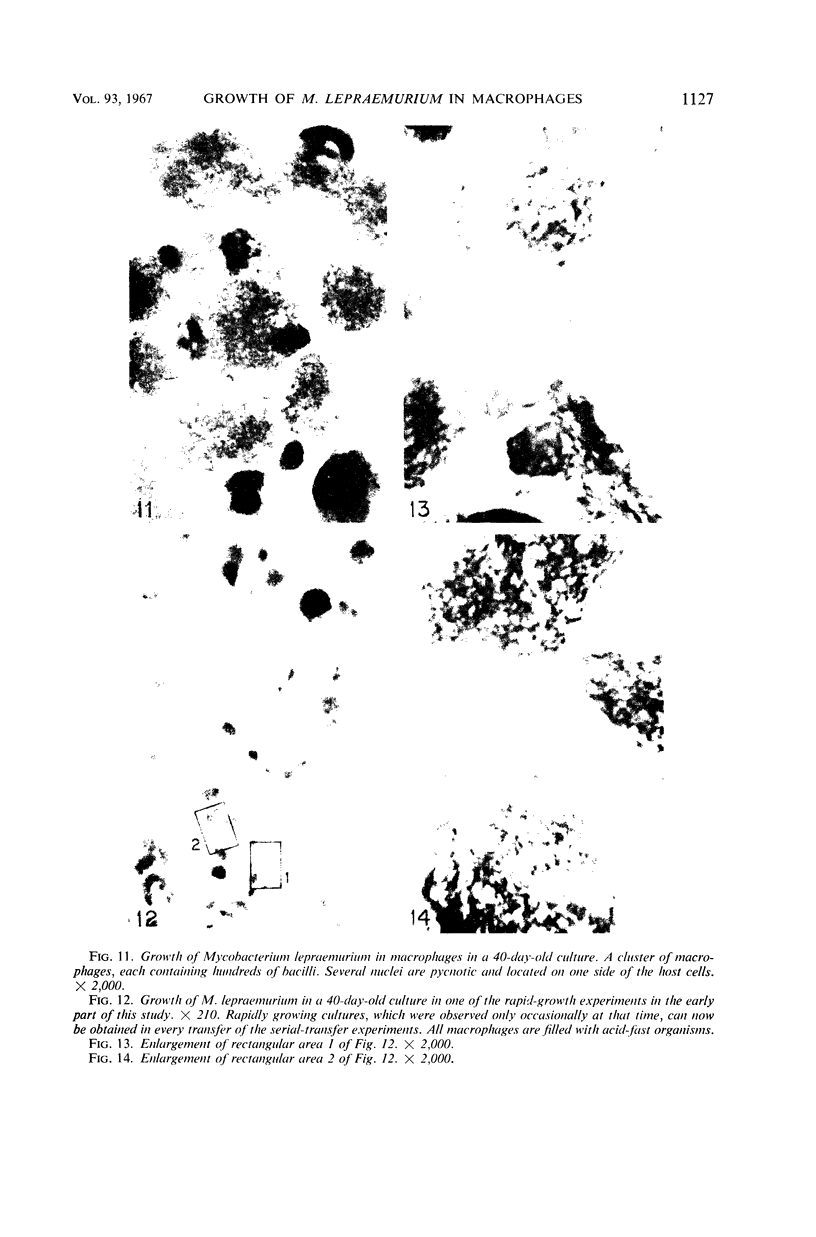
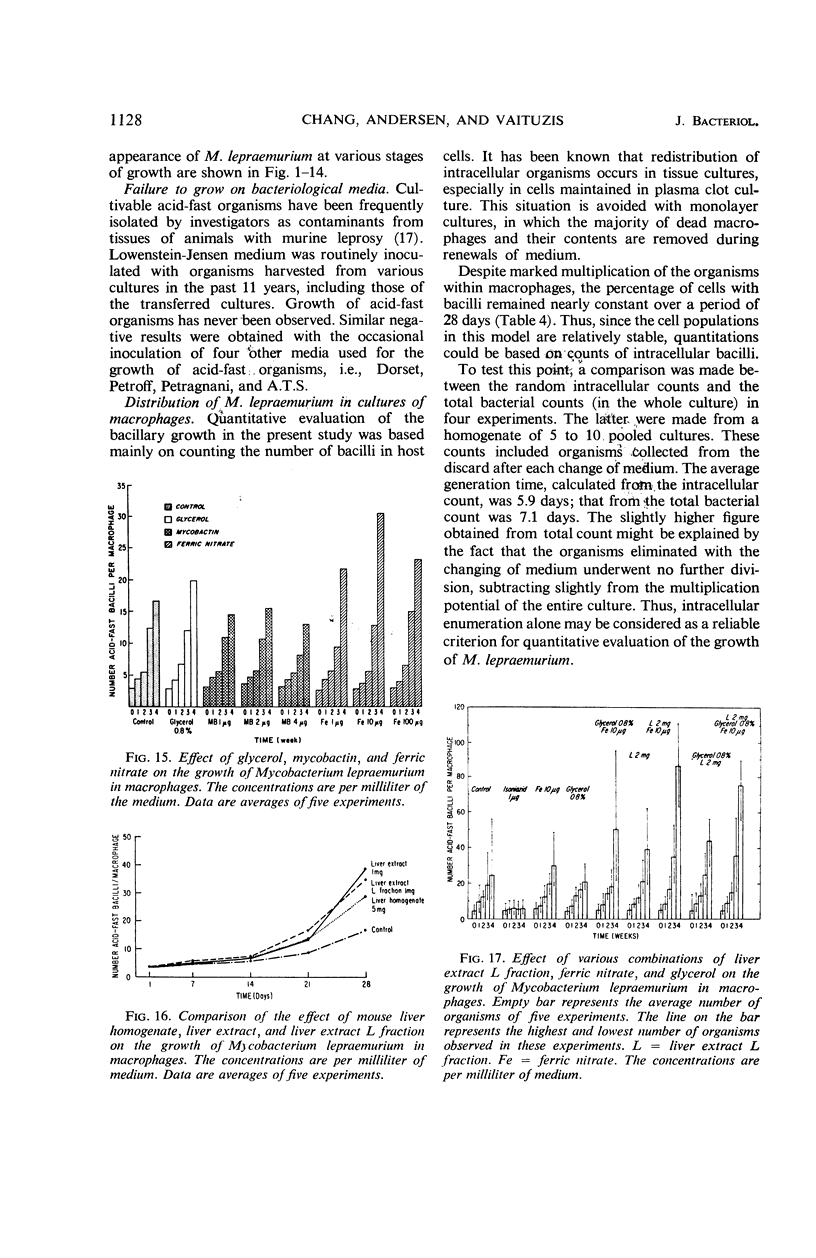
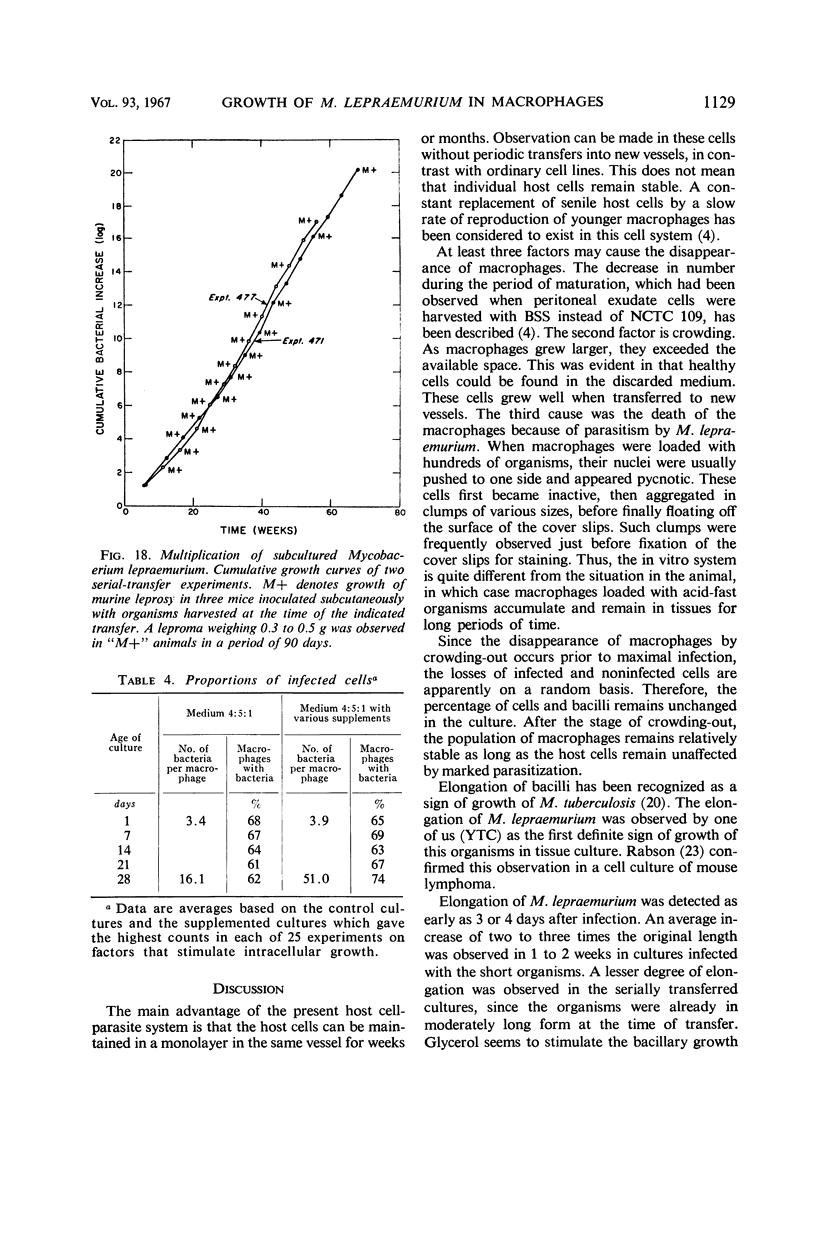
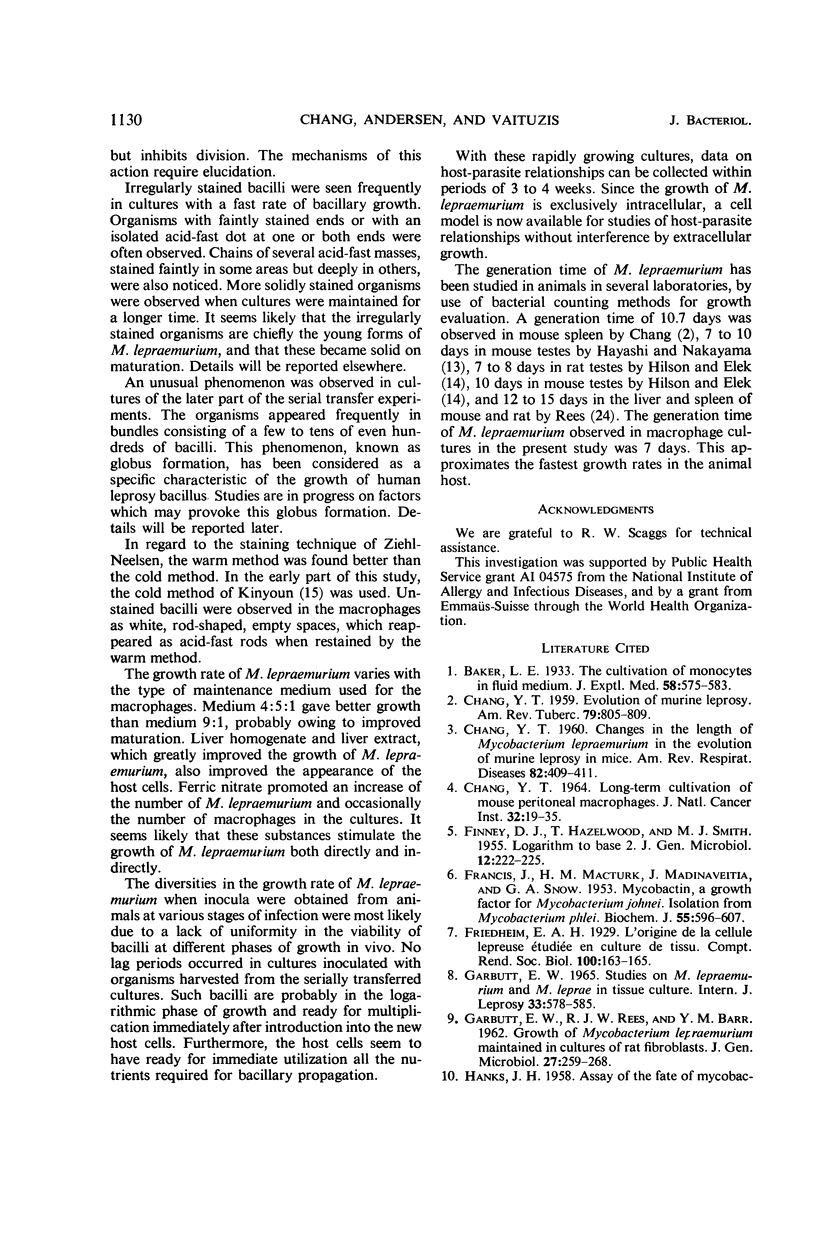
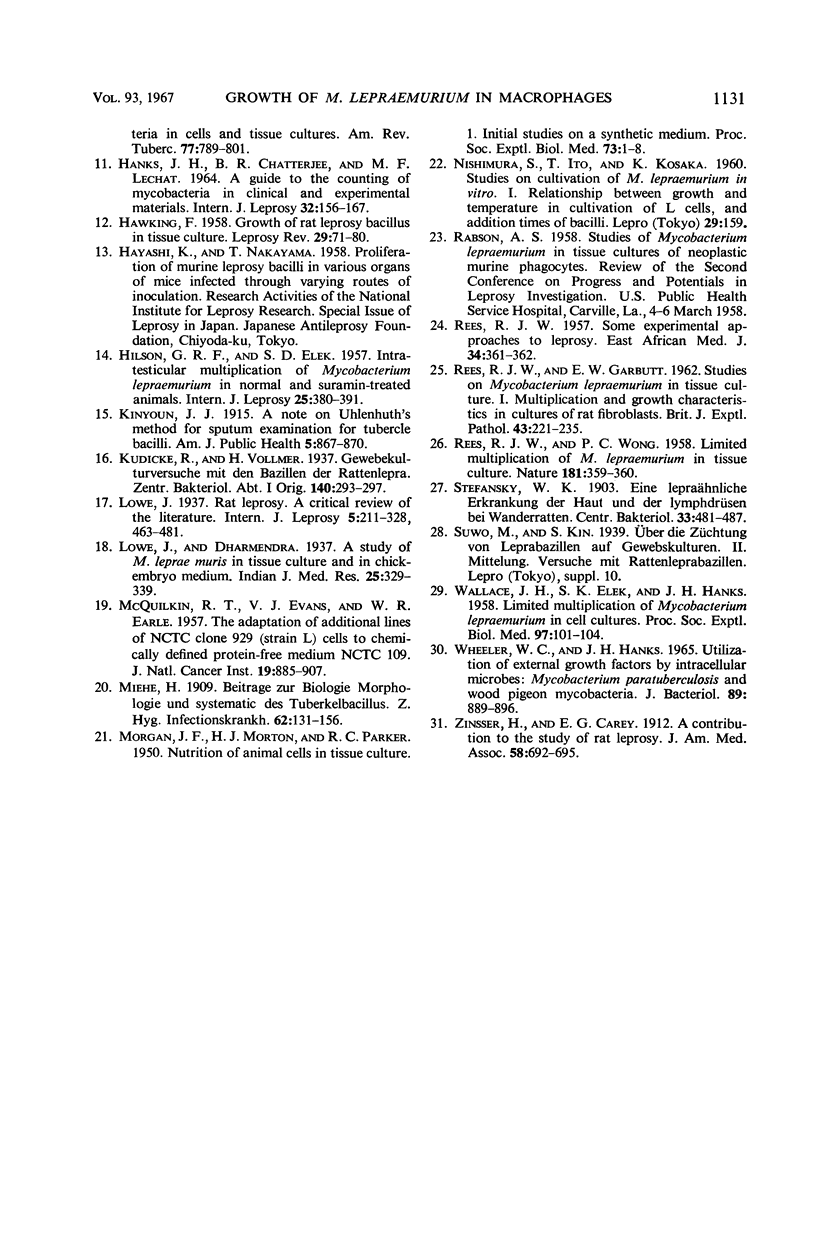
Images in this article
Selected References
These references are in PubMed. This may not be the complete list of references from this article.
- CHANG Y. T. Changes in the length of Mycobacterium leprae murium in the evolution of murine leprosy in mice. Am Rev Respir Dis. 1960 Sep;82:409–411. doi: 10.1164/arrd.1960.82.3.409. [DOI] [PubMed] [Google Scholar]
- CHANG Y. T. Evolution of murine leprosy. Am Rev Tuberc. 1959 Jun;79(6):805–809. doi: 10.1164/artpd.1959.79.6.805. [DOI] [PubMed] [Google Scholar]
- CHANG Y. T. LONG-TERM CULTIVATION OF MOUSE PERITONEAL MACROPHAGES. J Natl Cancer Inst. 1964 Jan;32:19–35. [PubMed] [Google Scholar]
- FINNEY D. J., HAZLEWOOD T., SMITH M. J. Logarithms to base 2. J Gen Microbiol. 1955 Apr;12(2):222–225. doi: 10.1099/00221287-12-2-222. [DOI] [PubMed] [Google Scholar]
- FRANCIS J., MACTURK H. M., MADINAVEITIA J., SNOW G. A. Mycobactin, a growth factor for Mycobacterium johnei. I. Isolation from Mycobacterium phlei. Biochem J. 1953 Nov;55(4):596–607. doi: 10.1042/bj0550596. [DOI] [PMC free article] [PubMed] [Google Scholar]
- GARBUTT E. W., REES R. J., BARR Y. M. Growth of Mycobacterium lepraemurium maintained in cultures of rat fibrolasts. J Gen Microbiol. 1962 Feb;27:259–268. doi: 10.1099/00221287-27-2-259. [DOI] [PubMed] [Google Scholar]
- HANKS J. H. Assay of the fate of Mycobacteria in cell and tissues cultures. Am Rev Tuberc. 1958 May;77(5):789–801. doi: 10.1164/artpd.1958.77.5.789. [DOI] [PubMed] [Google Scholar]
- HANKS J. H., CHATTERJEE B. R., LECHAT M. F. A GUIDE TO THE COUNTING OF MYCOBACTERIA IN CLINICAL AND EXPERIMENTAL MATERIALS. Int J Lepr. 1964 Apr-Jun;32:156–167. [PubMed] [Google Scholar]
- HAWKING F. Growth of rat leprosy bacillus in tissue culture. Lepr Rev. 1958 Apr;29(2):71–80. doi: 10.5935/0305-7518.19580008. [DOI] [PubMed] [Google Scholar]
- HILSON G. R., ELEK S. D. Intratesticular multiplication of Mycobacterium leprae murium in normal and suramin-treated animals. Int J Lepr. 1957 Oct-Dec;25(4 Pt 1):380–391. [PubMed] [Google Scholar]
- Kinyoun J. J. A NOTE ON UHLENHUTHS METHOD FOR SPUTUM EXAMINATION, FOR TUBERCLE BACILLI. Am J Public Health (N Y) 1915 Sep;5(9):867–870. doi: 10.2105/ajph.5.9.867. [DOI] [PMC free article] [PubMed] [Google Scholar]
- McQUILKIN W. T., EVANS V. J., EARLE W. R. The adaptation of additional lines of NCTC clone 929(strain L) cells to chemically defined protein-free medium NCTC 109. J Natl Cancer Inst. 1957 Nov;19(5):885–907. [PubMed] [Google Scholar]
- REES R. J., GARBUTT E. W. Studies on Mycobacterium lepraemurium in tissue culture. I. Multiplication and growth characteristics in cultures of rat fibroblasts. Br J Exp Pathol. 1962;43:221–235. [PMC free article] [PubMed] [Google Scholar]
- REES R. J. Some experimental approaches to leprosy. East Afr Med J. 1957 Jul;34(7):361–362. [PubMed] [Google Scholar]
- REES R. J., WONG P. C. Limited multiplication of M. lepraemurium in tissue culture. Nature. 1958 Feb 1;181(4605):359–360. doi: 10.1038/181359b0. [DOI] [PubMed] [Google Scholar]
- WALLACE J. H., ELEK S. D., HANKS J. H. [Limited multiplication of Mycobacterium lepraemurium in cell cultures]. Proc Soc Exp Biol Med. 1958 Jan;97(1):101–104. doi: 10.3181/00379727-97-23657. [DOI] [PubMed] [Google Scholar]
- WHEELER W. C., HANKS J. H. UTILIZATION OF EXTERNAL GROWTH FACTORS BY INTRACELLULAR MICROBES: MYCOBACTERIUM PARATUBERCULOSIS AND WOOD PIGEON MYCOBACTERIA. J Bacteriol. 1965 Mar;89:889–896. doi: 10.1128/jb.89.3.889-896.1965. [DOI] [PMC free article] [PubMed] [Google Scholar]



